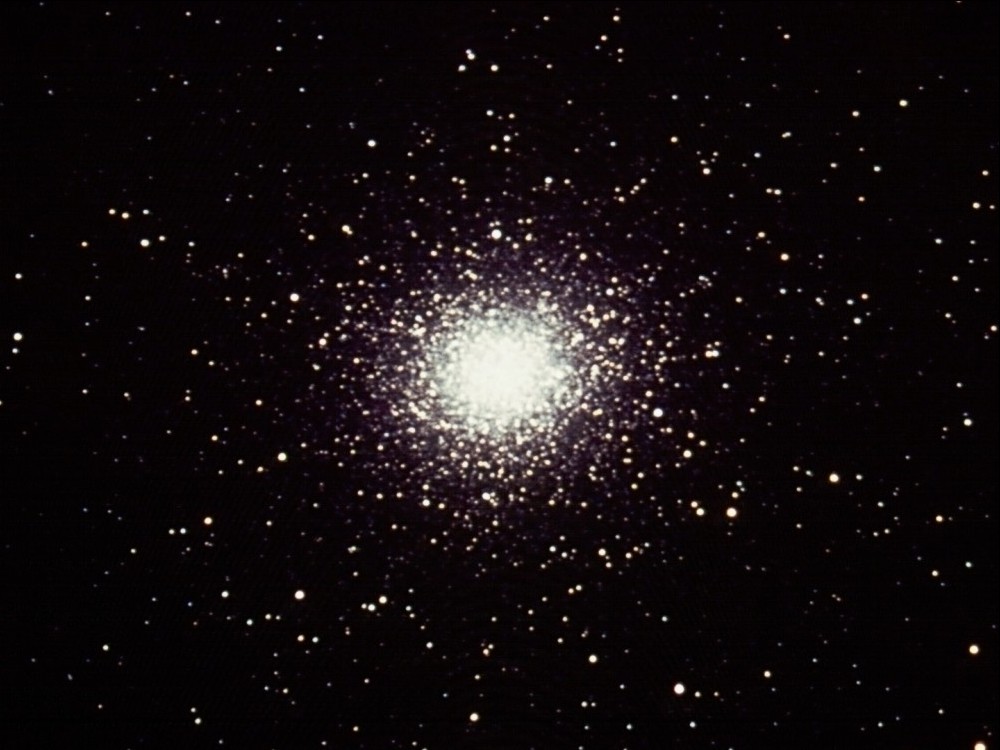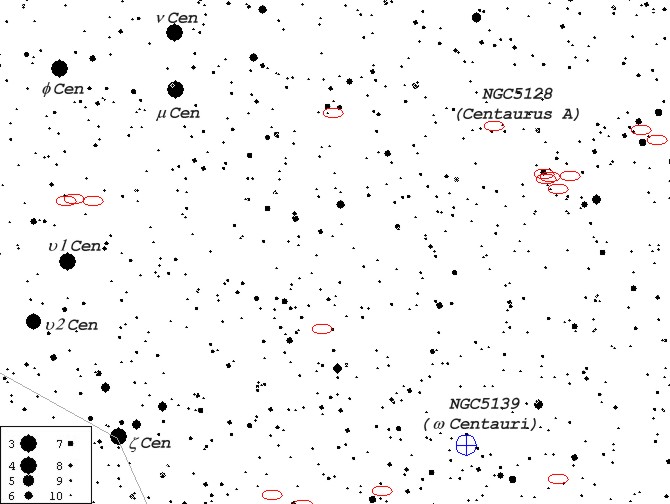
Omega Centauri (NGC5139)

This largest of Milky Way's globular clusters probably contains more than a few million stars (estimates range from 3 million to 10 million). Recent studies suggest that it is a remnant of the core of a galaxy cannibalized during the formation of Milky Way. Southern location of this object makes it impossible to observe from anywhere in Canada with the exception of southernmost Western Ontario where it just clears the horizon during culmination. From southern US, Omega Centauri is easy to notice with unaided eye as a hazy spot about a one half of Moon's diameter! Its view is beyond spectacular in any telescope - in larger apertures its swarm of well resolved stars seems three-dimentional. While its visual telescopic diameter is about 36 arcminutes, photographically it is more than 65 arcminutes across. To find it, look about 5° W of z Centauri (see finder map below).
The above image was taken in May 1996 during Texas Star Party near Fort Davies, TX using Celestron Ultima 8 SCT at f6.3. Two separate frames of Ektachrome P1600 slide film were exposed for 1 hour and 30 min., respectively, then scanned and combined using Corel PhotoPaint 8.
Field of view corresponds to 63 x 47 arcminutes with North up.

Map created in Guide 7.0 - 7°45' x 10°. North is up.
Number of visitors:
© Jan Wisniewski